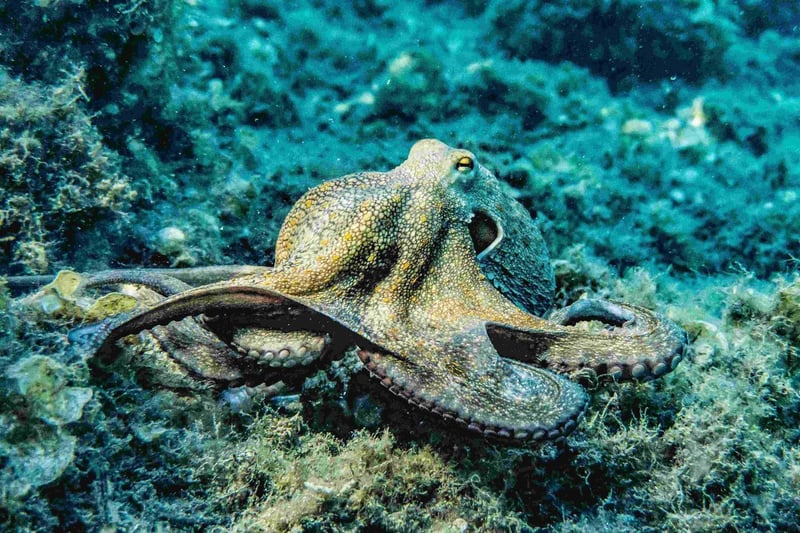
A recent aquarium incident shows why octopus touch tanks harm animals and people. Learn why these sentient beings belong in the wild—not on display.
Recently, a six-year-old boy at the San Antonio Aquarium in Texas was left with painful bruises from wrist to armpit after a giant Pacific octopus latched onto his arm in a public touch tank. It reportedly took three staff members and ice packs to free the child from the octopus’s grip.
We’re relieved the boy is okay and grateful this incident wasn’t more severe, but it raises urgent questions about the ethics of touch tanks, the safety of visitors, and, most importantly, the well-being of the animals trapped in them.
Liz Cabrera Holtz, Senior Programs Manager at World Animal Protection US, shared a statement about the incident:
“There’s no safe or humane way to have a ‘touch tank.’ Touch tanks keep marine animals in small, shallow pools of water so children can grab and pet them. It’s extremely stressful, frightening, and dangerous for the animals, some of whom have died after being mishandled. It’s also dangerous for humans. Children are routinely bitten, stung, and injured at touch tanks.”
Octopuses Are Not “Interactive Exhibits”
Octopuses are among the most intelligent invertebrates on Earth. They have problem-solving abilities, long- and short-term memory, and even distinct personalities. In the wild, a giant Pacific octopus roams vast stretches of the ocean, exploring rocky reefs, hunting, and interacting with its environment on their own terms.
In a touch tank, those same animals are confined to a fraction of their natural range, under constant artificial lighting, with strangers’ hands invading their space all day. This is not enrichment—it’s sensory overload.
Even Adults Struggle to Remove an Octopus From Their Arm
The San Antonio Aquarium itself has posted a response video on TikTok showing an adult staff member interacting with the same octopus in the same touch tank. In this clip, the staffer laughs nervously as the octopus’ arms wrap tightly around her arm—yet even for a grown adult, it’s difficult to get free. If an adult struggles to detach a curious octopus, why would it ever be considered safe for a child?
Touch Tanks Harm Animals and People
Proponents of touch tanks often claim they “educate” the public about marine life, but when animals are treated like living props, what message does that send? The result is stress and potential injury to animals, and, as we saw in Texas, risk to human safety.
Wild animals are unpredictable, especially when stressed. This octopus didn’t “misbehave.” She reacted the way any overstimulated, highly intelligent animal might when handled without consent. Touch tanks set both animals and people up for negative outcomes.
Octopuses Deserve Respect, Not Exploitation
Science is catching up to what animal advocates have said for years: octopuses are sentient beings. The United Kingdom already recognizes cephalopods (octopuses, squids, cuttlefish) as sentient under the law. The United States has no such protection.
Without legal recognition of their sentience, octopuses remain vulnerable to exploitation—not only in touch tanks and aquariums, but also in the growing (and deeply cruel) octopus farming industry. Whether for entertainment or for food, keeping octopuses in captivity strips them of the freedom and autonomy they deserve.
It’s Time to Act
This incident in Texas is more than an unfortunate accident. It’s a clear sign that we must end touch tanks and shift toward true respect for marine wildlife.
Here’s how you can help:
- Avoid aquariums with touch tanks or other interactive exhibits that allow hands-on contact with wildlife.
- Support legislation that recognizes octopuses and other cephalopods as sentient beings deserving of protection.
- Share this story with friends and family to raise awareness about why wildlife belongs in the wild.
Octopuses are curious, sensitive, and remarkable creatures. They are not ours to pet, display, or eat. They are ours to protect. Let’s give them the freedom they deserve.